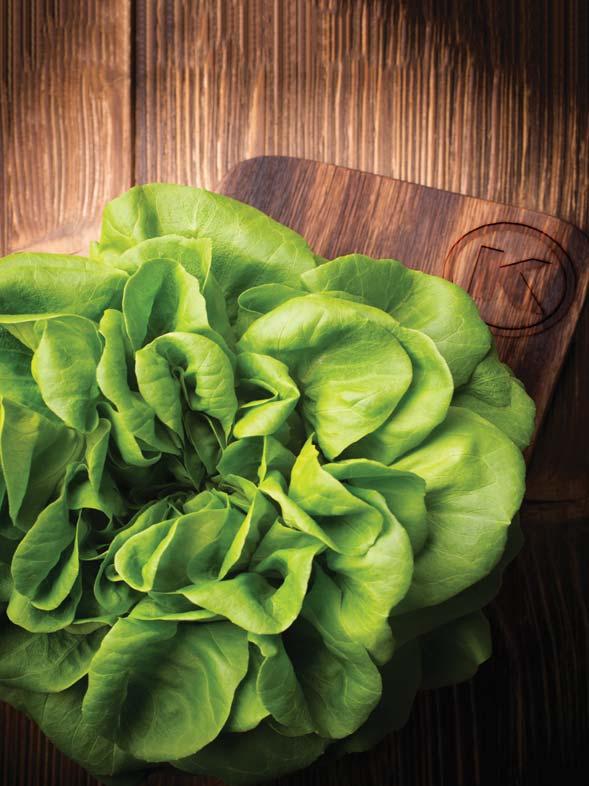

ה”ב
ז”עשת חספ PESACH 5777 א ןוא רשכ ןכעליירפ חספ Wishing You a Happy Pesach! REMEMBERING Rabbi Berel Levy OB”M on his 30th Yahrzeit X
CERTIFIED SOUL NUTRITION
4 5 6 8 10 11 14 17 18 20 22 23
QUESTIONS FOR THE ~
HEALTHY SPIRIT
WASHING & CHECKING LETTUCE ON SHABBOS OR YOM TOV
by Rabbi Yoni Rappaport
KEEPING KOSHER IN KENTUCKY by Duby Litvin
PESACH RECIPE: CLASSIC BRAISED POT ROAST
A PROMISE THAT TOOK 30 YEARS TO LEAVEN
by Zeev Benoni
WHAT’S UP WITH WASA CRISPBREAD
by Rabbi Benzion Chanowitz
WHAT’S THE BIG DEAL ABOUT SLURPEES?
by Rabbi Sholom Ber Hendel
FROM THE DESK OF RABBI DON YOEL LEVY
WHO’S BEHIND THE ~ Rabbi Yankel Wilschanski
CHASSIDIC INSIGHTS
Kos Shel Eliyahu
SOUL NUTRITION
by Rabbi Chaim Fogelman
Dear Reader,
As we were writing and arranging this issue of Kosher Spirit, we were simultaneously putting the finishing touches on a long overdue project I’ve wanted to complete for quite some time.
This year, on the 5th of Nissan, is the 30th yahrzeit of Rabbi Berel Levy, ob”m. As most of you know, it was Rabbi Berel Levy who put the “~” on the kosher map and it was he who set many of the high standards that the ~ so vigorously upholds today.
Though I never met Rabbi B. Levy personally, I have heard many stories about him. I remember meeting people in the food industry some 20 years ago, 10 years after his passing, and they had great stories and such fond memories of Rabbi Levy visiting their plants and certifying their products.
Rabbi Berel Levy was a fascinating man and now I’m happy to say we have put together a marvelous book chronicling his life and accomplishments – from his work at Torah U’Mesorah, to his extraordinary trips to the former Soviet Union, and, of course, his role in making the world a more kosher place.
Certainly, Rabbi Levy is still looking down from up above upon this kashrus organization, which meant so much to him, and is, without a doubt, so proud of the ~ today under the leadership of his son, Rabbi Don Yoel Levy, shlit”a, together with the work the many rabbonim and staff that put heart and soul into continuing his wishes and legacy.
KOSHER SPIRIT Pesach 5777
EDITOR-IN-CHIEF: Rabbi Chaim Fogelman
EDITOR:
Dina Fraenkel
DESIGN: Spotlight Design
We welcome your comments, submissions and letters to the editor.
Mail: 391 Troy Avenue, Brooklyn, NY 11213
Email: editor@kosherspirit.com © 2017. No portion of this publication may be reprinted without written consent from the publisher.
On a yahrzeit there is a custom to bless the descendants and wish them a long and healthy life, so I take this opportunity to bless Rabbi Don Yoel Levy with much success in all his endeavors, and to continue leading the ~ with gusto. To all the rabbonim, mashgichim, account representatives, support staff, and all those that work at the ~: May Hashem fulfill all your desires, and shower you all with health, nachas, wisdom, and siyata d’shmaya. And, most of all
Keep an eye out for this inspiring book and learn about the remarkable life of Rabbi Berel Levy.
Wishing you all a very “kosher” and happy Pesach,
Rabbi Chaim Fogelman Editor in Chief
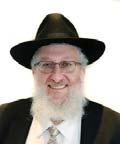
רתומה תא רוסאנ אלשו רוסאה תא ריתנ אלו רוהטה תא אמטנ אלש
SHARE YOUR SPIRIT
3
2 www.OK.org
Share Your Spirit Your


Readers share their thoughts...
SINCE THE RELEASE OF THE KOSHER HOUSEKEEPER, THE ~ HAS DISTRIBUTED OVER 6,000 PRINTED COPIES AND DOWNLOADS!
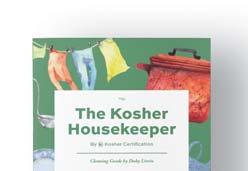
Dear Kosher Spirit,
Please send me a copy of the guide for household help in a kosher home. This is a wonderful idea, I have a lot of challenges with the home health aides who take care of my elderly parents. We explain, we label and separate everything in the kitchen, and still have many issues. This is wonderful, thank you!
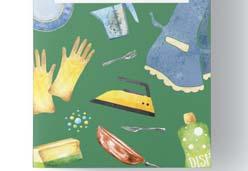 Wendy L.
Wendy L.
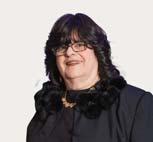
Dear Kosher Spirit,
We at Kashrus Magazine were saddened to learn of the passing of Mrs. Wudowsky. For many years we had the privilege of working with her on a number of important projects.
First, she was our “go to” person for the wording of our Consumer Alerts we were publishing on products involving the ~. Her responses were quick, usually the first of all kashrus agencies, and clear.


But the other main area of our involvement was in the area of misuse of the ~ kosher symbol. Often, we would contact her to investigate whether the ~ claim was accurate. We worked together often on misuse in foreign countries and on company websites.
Always we found her easy to work with and a true professional.
May her memory be a blessing.
Rabbi Yosef Wikler
Dear Kosher Spirit,
I’d like to thank you for featuring my bubby, Mrs. Wudowsky, in the latest Kosher Spirit, may she be a meilitz yosher for all of us!
Chana G. S.
FEEDBACK
www.KosherSpirit.com 3
ng en n,
The ~ receives many letters/emails with kosher questions...

DEAR KOSHER SPIRIT, I PURCHASED DISPOSABLE FOIL PANS. IF I INTEND TO REUSE THEM, DO THEY REQUIRE TEVILAS KEILIM?

The ~ Responds:
Disposable utensils, pans, etc. do not require tevilas keilim because they are not designed for long term use, even if the consumer chooses to use it more than once. Of course, there will be differing opinions. Please ask your local Orthodox rav for your personal p’sak. For details, please see the Guide to Tevilas Keilim at kosherspirit.com.
4 www.OK.org
ONIONS
SUPPORT THE CARDIOVASCULAR SYSTEM AND ARE A GREAT SOURCE OF BIOTIN AND A GOOD SOURCE OF VITAMIN C, COPPER, B6 AND B1, PHOSPHOROUS, POTASSIUM, AND FOLATE
The humble potato is a good source of antioxidants, vitamin B6, vitamin C, potassium, manganese, phosphorus, niacin, copper, and pantothenic acid.
Sw t potatoes
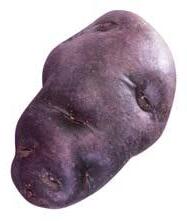
Ca ots are an excellent source of betacarotene, which the body makes into vitamin A, an essential vitamin for healthy vision and bone growth.



are anti-inflammatory, have antioxidant properties, and they help maintain blood sugar levels.

R t Vegetables
Most of us eat more root veggies during Pesach than we do during the whole rest of the year! Root veggies are easy to peel, easy to clean, and a delicious replacement for grains. Plus, they have a whole host of health benefits that you may not know about!
Drinking B t juice can help you exercise longer and can help reduce blood pressure.

Because root vegetable absorb so much nutrients from the ground, they can also absorb chemicals, making organic root veggies a good choice to protect yourself from pesticides.
One cup of Turnip has about 30% of your vitamin C needs for the day and helps your body absorb iron and make collagen.
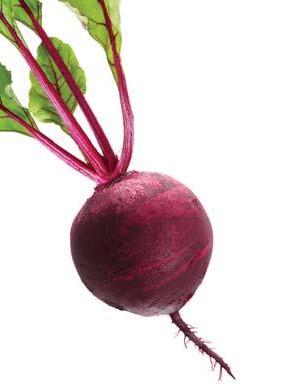
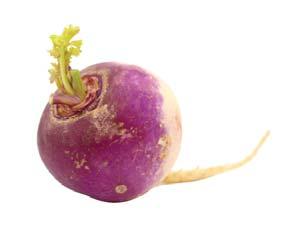
Parsnips
are a great source of folate, a B vitamin that is essential for pregnant women, and helps reduce the risk of neural tube defects.
www.KosherSpirit.com 5
CLARIFICATION: Washing & Checking Lettuce on Shabbos or Yom Tov
By Rabbi Yoni Rappaport In the Chanukah
clarification.
5777/Winter
bos and Yom Tov with diluted soap. This is because there isn’t a
2017 issue of Kosher Spirit, the
certainty that there are any insects on the lettuce. However, this
answer that was given to the Question for the ~ needs further
should be done immediately prior to the meal. If one does find an insect on a leaf, they should either discard the
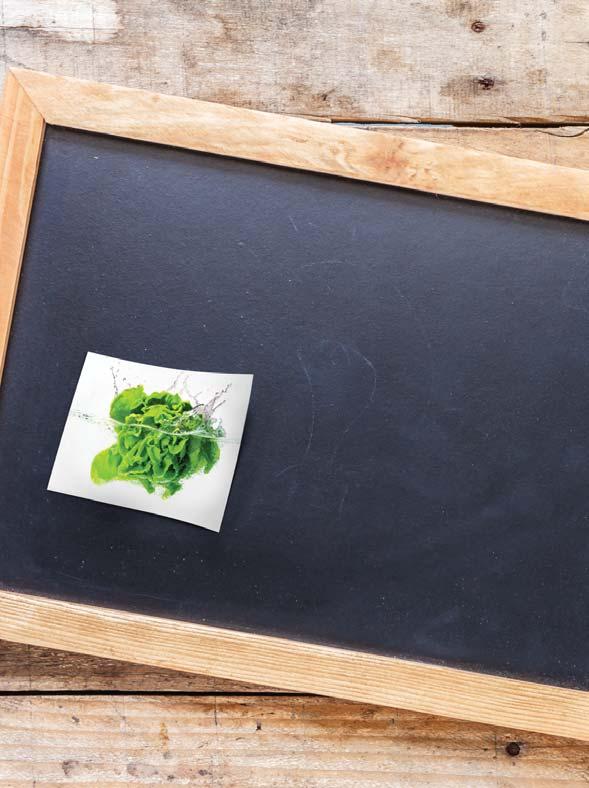
Lettuce can be soaked, washed and checked for insects on Shab-
leaf, or shake the leaf until the insect falls off. One should not wash
the insect off the leaf. Please note that this is applies to lettuce, which is generally
clean, and the sole purpose of soaking and washing the lettuce is for
insect checking. If the lettuce is full of dirt then it cannot be soaked
in order to remove the dirt, as that is an act of Borer. One may wash
off the dirt under running water immediately prior to the meal.
6 www.OK.org
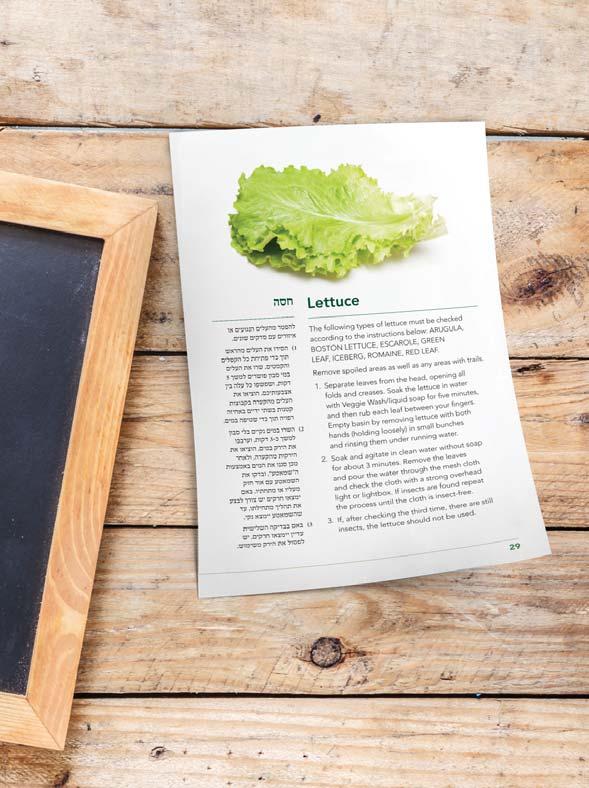
www.KosherSpirit.com 7 Insert from Veggie Checking Guide Page 29
By Duby Litvin

KEEPINGK Kentucky in
THERE IS A COMMON MISCONCEPTION THAT WHEN YOU LEAVE THE FRIENDLY CONFINES OF NEW YORK, YOU’RE ENTERING A KOSHER DESERT. KOSHER IN KENTUCKY?
HOW IS THAT EVEN POSSIBLE?


When you think of the South, and Kentucky in particular, you may think of horses, bourbon, KFC or the famous Louisville Slugger. What you may not realize is that Jewish life has long flourished in the little town of Louisville. In the 1850s, Jewish-German immigrants formed the first shul in Louisville and within a few decades the Jewish population boomed! By 1890, as more immigrants from Europe moved to Louisville, the downtown Preston Street became similar to New York’s “Lower East Side,” with shuls, kosher markets, and a rich Yiddish culture, including a Yiddish newspaper and even Yiddish theater!
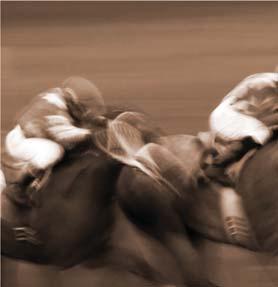
Kosher was of vital importance to the Jewish community. Jewish Hospital, founded in 1903 by Jewish immigrants, had a fully kosher kitchen, and the National Council of Jewish Women began a program that allowed children of poor Jewish immigrant families to buy kosher meals in public school for a penny.
Bourbon, perhaps Kentucky’s most famous product, was filled with Jewish tradesman. In order to ensure everything was kosher, Jews made sure to be present during the production process and eventually formed a monopoly over the liquor
trade. Even today, many distilleries, including Heaven Hill Distilleries and others are Jewish owned.
Throughout the first half of the 20th Century, Louisville’s Jewish communities continued to thrive. Kosher was readily available with bakeries with multiple butcher shops to choose from. A chicken cost $1 for shechting, and an additional 50 cents to be salted and kashered!
THE WINDS OF CHANGE


After World War II, many communities, especially in the Midwest, began to change. The population became older, and the younger generations began moving to more metropolitan cities such as New York, Chicago, and Atlanta. As the once thriving community declined, one by one kosher establishments closed their doors.
In 1994 the last kosher butcher in Louisville could no longer remain in business. Chabad shluchim, Rabbi Avrohom and Goldie Litvin, saw this potential crisis as an incredible opportunity. While researching the decline of the “mom and pop” shops and the movement towards “one stop shop” supermarkets for all their shopping needs, inspiration struck. Rabbi Litvin wondered, “What if we had a kosher butcher, cutting and wrapping fresh kosher meats and chicken, within a non-kosher supermarket!” Such an idea was unheard of in the 1990s, but
8 www.OK.org
OSHER






With a mashgiach sitting in the refrigerated cage, they began offering fresh kosher meat once a week. This quickly turned into 3 days a week and, finally, 5 days a week, one could walk in and order freshly cut kosher meats. A variety of programs were hosted to encourage the community to participate in kosher eating and purchasing, such as Kosher Week and Kosher Day, along with special sales.
Rabbi Litvin was determined to create this new idea and make it work to keep kosher alive in his city.
He approached a few major supermarkets in Louisville with his new idea, to no avail. Still, Rabbi Litvin persisted. One of his constituents served on a board with Mr. John Hackett, President of the Mid-South Division of Kroger Supermarket. The connection was made, and after much discussion about Jewish shopping habits and the importance of kosher food, Kroger agreed to give it a shot. There was only one condition. “We will do it as a community service,” said Mr. Hackett, “just find us a way that we won’t lose any money.” Suddenly, Rabbi Litvin’s dream was becoming a reality.
Now came the hard part. First, the Litvins procured depreciated meat equipment for the butcher and created a “Kosher Cage”, a locked, fenced in area within the Kroger meat department.
In the late 1990s, Rabbi Litvin accompanied Kroger reps to the first KosherFest – the largest kosher-certified products trade show. After seeing the expansive kosher offerings, Kroger created an entire kosher section in the store, carrying dry goods, snacks, and Cholov Yisroel milk and dairy products. They continue to sell many of those products today at the McMahan Plaza Kroger. Many cities, including the HEB Supermarket in Austin, Texas modeled their kosher department after the Litvin’s revolutionary idea.
With the turn of the century, shopping trends shifted once again. New technologies, larger meat packaging industries such as Agri Processing and Meal Mart and the new “cryovac” packaging process allowed customers to purchase pre-packaged meat and chicken for the first time. Kroger in Louisville re-invented their system to allow a wide variety of packaged kosher items on the shelves ready for purchase.
Today, kosher remains to be an important and vital part of the Jewish community in Louisville. While many may not keep a traditionally kosher home, kosher products are still very important to the local consumer, especially during the holiday shopping seasons. As Pesach approaches, the kosher section triples in size, to accommodate the large orders of matzah, wine, varieties of meat, and other necessities for the Pesach Sedarim. Kroger understands this great demand and continues to work with the Jewish community, ensuring that popular products for Yom Tov are stocked. Throughout the year, from brisket and matzah on Pesach to honey cakes and raisin challah on Rosh HaShana, Jewish Louisville connects to their heritage through kosher food.
For over 200 years, the Jews of Louisville have always, regardless of affiliation, had a strong craving and unique bond with kosher food, and kosher will always be an intrinsic part of this city’s Jewish soul.
Visitors to Louisville can contact chabad@chabadky.com to find out more about kosher options available in Kentucky.
Duby Litvin has been writing lists since she learned to hold a pen. In 2014, she created Duby’s Pesach Lists, a guide filled with every list imaginable to help you get organized for Pesach. When The Lists went viral, Duby’s life changed forever as she became an authority on Pesach planning. Duby lives in Louisville KY with her husband Shmully, and when she is not making lists, she owns a small kosher bakery and dabbles in writing childrens’ literature. Connect with Duby by emailing her at MrsDuby@gmail.com. ~
www.KosherSpirit.com 9
THE ~ CERTIFIES 19 FACILITIES AND 245 INGREDIENTS AND PRODUCTS IN KENTUCKY!
Braised Pot Roast
Cooking large cuts of meat like pot roast is very satisfying. Pot roast is from a larger group of muscles that come from the shoulder or chuck. The meat is considered an economy cut because it is relatively inexpensive. Pot roast needs the slow, leisurely braise in a flavorful liquid to bring out the flavor and to melt the connective tissue. The more flavorful the braising liquid, the better the flavor of the final end result. Be sure to use a lot of aromatic herbs and vegetables for your braising liquid. I also try to use a tasty wine that is actually drinking quality and not one meant only for cooking. Those wines are inferior and not tasty. I recommend a full-bodied dry red wine, such as Cabernet Sauvignon.
Preheat oven to 325°F or slow cooker to LOW.
INGREDIENTS
1 4-pound pot roast
Kosher salt and freshly cracked pepper
Olive oil
2 medium red onions, sliced
2 medium carrots, diced
2 celery ribs, diced
8-10 large garlic cloves, minced
2 tablespoons tomato paste
3 cups good-quality dry red wine
2 cups chicken stock
DIRECTIONS
1. Heat a large Dutch oven or sauté pan, lightly coated with olive oil, over medium-high heat. Pat dry the roast and generously season the meat with salt and pepper.
2. Add the meat to the pan and brown on all sides until caramelized. Transfer the meat to a dish or insert for slow cooker, and set aside.
3. Add the vegetables, in batches, and add oil if necessary. Brown the vegetables, being sure to season each batch with salt and pepper. Transfer
each batch to the insert for the slow cooker or pan.
4. To the last batch of vegetables, add the tomato paste, and sear the paste until it has darkened and is very fragrant. The paste should be dark red and not black!
5. Add wine to the sauté pan and scrape up any browned bits with a spatula.
6. Add all the ingredients to the slow cooker or Dutch oven. Cover and braise for 2-2½ hours or until a fork can be easily inserted and pulled out of the meat.
7. Carefully remove the meat and allow to rest for 20 minutes.
8. Strain out the vegetables and discard. Pour the braising liquid into a saucepan and reduce by 2/3 over medium heat or until the liquid coats the back of a spoon. The liquid should be similar to a glaze thickness.
9. Cut the pot roast into large chunks and arrange on a platter. Drizzle with sauce and pass extra sauce around the table.
ROASTED CARROTS
INGREDIENTS
2 bunches of baby carrots with tops cut off with an inch left attached to the carrot for a rustic look
Extra-virgin olive oil
Kosher salt and pepper
DIRECTIONS
Preheat oven to 350°F, and line a baking sheet with parchment paper.
1. Toss the carrots with olive oil, salt and pepper and place in the lined
By: Shifra Klein - Joy of Kosher Magazine. Subscribe at www.joyofkosher.com/subscribe
baking pan. Don’t overcrowd the carrots or they won’t brown evenly.
2. Roast the carrots about 15-20 minutes until they are light, toasty brown but still show their gorgeous color. You should be able to pierce the carrot with a fork and have a little resistance.
3. Toss the carrots with crispy shallots.
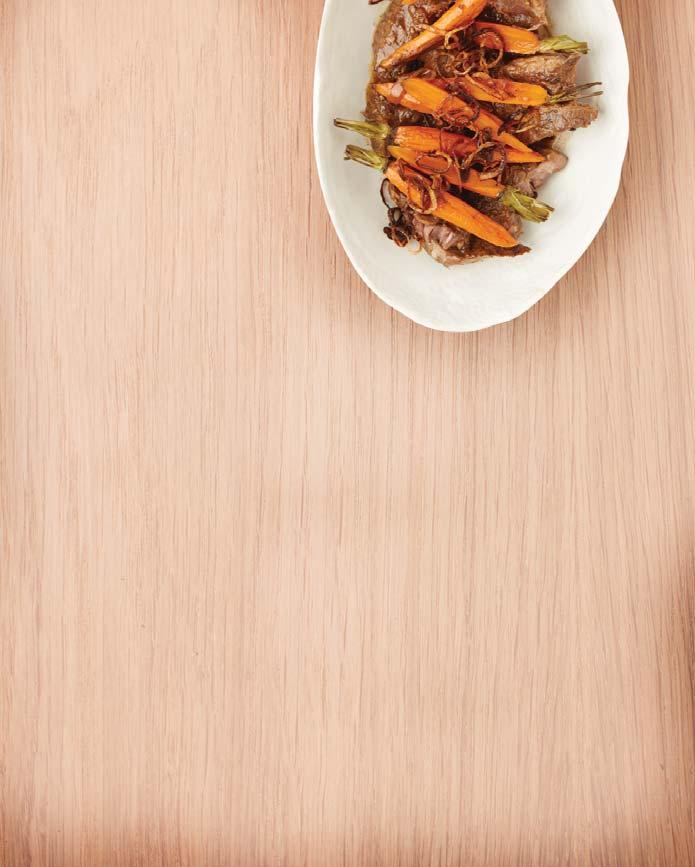
CRISPY SHALLOTS INGREDIENTS
4 large shallots, peeled and sliced very thinly on a mandoline or with a knife
Extra-virgin olive oil
Kosher salt and freshly cracked pepper
DIRECTIONS
Line baking sheet with paper towels. Place a 9-10 inch sauté pan over medium-low heat. Add about ½ inch of oil. Cook the shallots very slowly until they turn golden brown. Be patient! This could take 15 minutes.
Transfer the shallots to the lined pan and season with salt and pepper. Store the shallots in a container with a tight-fitting lid at room temperature for up to 3 days.
RECIPE
CLASSIC
A PROMISE THAT TOOK 30 YEARS TO LEAVEN
BY ZEEV BENONI
D


espite our age difference, I considered Rabbi Bernard Levy, ob”m, a dear friend. Rabbi Levy provided the kosher certification for Planter’s Peanuts in Suffolk, Virginia where I was the Quality Control Manager in the late 1970s. Management had assigned me to the rabbi, probably because I was one of no more than two Jews in town. Later, I moved on to Fleischmann’s Vinegar and Yeast as Vice President of Research & Development in Oakland, California where I continued to enjoy Bernard’s friendship. It has been 30 years since his passing and I think of him often. This he has reciprocated by visiting with me in my dreams.


I learned a lot about Yiddishkeit from Rabbi Levy. I especially enjoyed listening to his repertoire of life experiences gained during his travels beyond the Iron Curtain as emissary of the Lubavitcher Rebbe. If the reader were to ask me what it was like to be with him, I would answer: “Where else can one bask in the presence of a holy person and learn so much with complete fun and joy?” As I recall, I started to feel sad just a few hours before his departure to New York at the end of each visit.
What was this promise that I made to the rabbi that took 30 years to come to fruition? I promised Rabbi Levy that I would write a detailed explanation about the making of shmurah matzah.
We were approaching Passover 1986 (which would be Rabbi Levy’s last Passover before his passing) so matzah was one of the topics of discussion. I asked the rabbi, “Why did eating matzah became one of the most important part of the Haggadah (together with Pesach and Maror)? Why had it survived the genera-
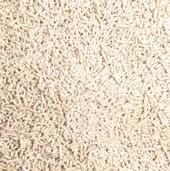
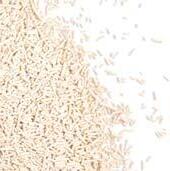
—————
www.KosherSpirit.com 11
tions and become so important (Shemos 12:39 and Haggadah), becoming equal to, or perhaps greater than, a sea of miracles? What is the big deal about not having the time to bake leavened bread? And besides, if they liked bread so much, why didn’t they just make sure to leave enough time to prepare real bread?
Rabbi Levy brought me a box of round handmade shmurah matzah (meaning ‘guarded’ in Hebrew) and said that this type of matzah has remained the same from the time our forefathers, when they had to carry the unleavened dough on their backs while leaving Egypt. After comparing the cost of a filet mignon of the same weight, we concluded that the matzah was more expensive, but well worth the cost. The shmurah matzah was definitely a metziah (an extraordinarily great deal that’s worth putting in effort to get) and Rabbi Levy insisted that the word metziah was derived from the word matzah.
To be a “Shmurah Matzah”, the ingredients and the entire process must be guarded against leavening. The whole process is supervised by a rabbi starting in the farm where the wheat is harvested, and ends with a hand crafted, labor-intensive, round matzah. Rabbi Levy gave me a detailed description of the supervision in the fields, from checking the moisture of the grains and overseeing the harvest. To begin with, a matzah can be made only from grains that can become chometz (those that can ferment when mixed with water). Our job, with the aid of a stopwatch, is not to allow more than 18 minutes to elapse from the time water is added to the flour until the matzah exits the oven.
“I know why it’s 18 minutes!” I exclaimed to the rabbi. The rabbi said “Hah…” and he paused for emphasis, but looked not the least bit surprised as he had previously told me that science has come to shine light on the truth of tradition. Rabbi Levy asked if I would be willing to write about the process in his kosher magazine, then called The Jewish Homemaker. Of course, I agreed; I just had no idea in that 30 years would pass in the meantime. But, a promise is a promise, so let me explain.
In general, the baking process may look simple but, chemically speaking, it is a highly complex process involving physical and biological properties taking place at a microscopic level. In normal fermentation, yeast cells are dispersed during the mixing of flour, water and sugars, which yields carbon dioxide gas, resulting in the aerated loaf and alcohol as the principle end products. There are literally hundreds of other flavor producing compounds.
Yeast, as a living organism, requires proper moisture, some acidity and a carbon source or food to function properly. The food is assimilated as nitrogen and available sugars, known as carbohydrates or simple sugars. The truth is that yeast is present everywhere, it is air bound and given the general name “wild yeast”, as opposed to cultivated yeast purchased in the supermarket.
With regard to sugars, I purposely mention “available sugars”, rather than added sugar. Yeast likes to utilize simple sugars, namely glucose, fructose and mannose. Sucrose is a disaccharide with the common name “table sugar” and it is a combination of glucose and fructose, which needs to be split in order to be available for yeast fermentation. The sugar maltose, found in flour, is also a disaccharide, composed of two molecules of glucose that also needs to be split to enable fermentation.
How are the sugars split to make them available for yeast fermentation? The yeast is efficient and has an arsenal of enzymes at its disposal. In this brief discussion we will be concentrating on beta fructosidase, also called invertase, and alfa–D glucosidase, known as maltase.
Yeast produces energy (ATP) in the presence of oxygen and in its absence, such as during baking. It is much more efficient in the presence of oxygen, using the kreb cycle to convert sugar. When oxygen is absent during fermentation, the Pasteur Effect takes place. The yeast needs much more sugar, up to ten times more, to produce the same amount of ATP.
When yeast “sees” simple sugar, it utilizes it immediately. When a baker adds inverted sugar (sucrose) to the dough, the enzyme invertase
12 www.OK.org
C6 O8 H
almost instantly splits it into simple sugars. There is no simple sugar or sucrose added to shmurah matzah, but the yeast is expecting it and looking for it anywhere. At this point the maltose (sugar) in the flour falls under the control of five genes (discovered in 1950 and called as a group the polymeric gene system MAL 1-4 and MAL -6). Any one of these genes has the ability to ferment maltose and it does so after 18 minutes in a perfect temp of about 35 Celsius. In other words, if you pass the 18 minutes and fermentation occurs, the result is resulting “bread”, not matzah!

In regards to being in a hurry and not leaving enough time to prepare regular bread, Rabbi Levy said we would be in the same situation. “Imagine,” he continued, “Moses would come to you and say, ‘The redemption is tomorrow, right after the plague of blood.’ You would pack your suitcases, bake your bread, pay your debts, etc. Then, when nothing happens, you have all this extra bread and suitcases that you have to unpack. Then, you are told again, ‘Prepare to leave right after the plague of frogs.’ Well, after nine times of preparing to leave and nine plagues, I do not know what you would say, but you might not do much in terms of baking or packing. This teaches us not to cry wolf; the Redemption is coming, and we need to get ready, even taking care of the minutest details, such as shining the buttons of our coats to welcome Moshiach.
Now that I have fulfilled my promise, I am sorry I did not complete it earlier, as I feel free and relieved. But, before I conclude, I thought that it was only appropriate to mention that the Amidah prayer, known as Shmoneh Esreh (18) is equal to the gematria of the Hebrew word “chai”, meaning alive. Is it all a coincidence? You decide.

HOW YEAST WORKS

A Simple Explanation
by Shirley O. Corriher, Fine Cooking Magazine, (c) 2001 by The Taunton Press Inc. www.finecooking.com
The essentials of any bread dough are flour, water, and of course yeast. As soon as these ingredients are stirred together, enzymes in the yeast and the flour cause large starch molecules to break down into simple sugars. The yeast metabolizes these simple sugars and exudes a liquid that releases carbon dioxide and ethyl alcohol into existing air bubbles in the dough.
If the dough has a strong and elastic gluten network, the carbon dioxide is held within the bubble and will begin to inflate it, just like someone blowing up bubblegum. As more and more tiny air cells fill with carbon dioxide, the dough rises and we’re on the way to leavened bread.
www.KosherSpirit.com 13
2 O C12H22O11
H
•MYTHS V S REALITY•
V S R EALITY

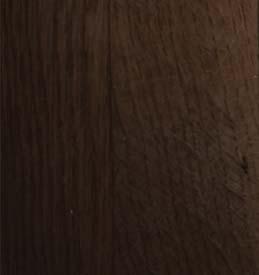

belief, there is no reason to avoid gluten unless you have a bad reaction to gluten. For everybody else, eating gluten is healthy, as it may reduce blood pressure and inflammation. In addition, glutenfree foods often contain more fat, more sugar and are more expensive than other foods.
(Taken from a recent Consumer
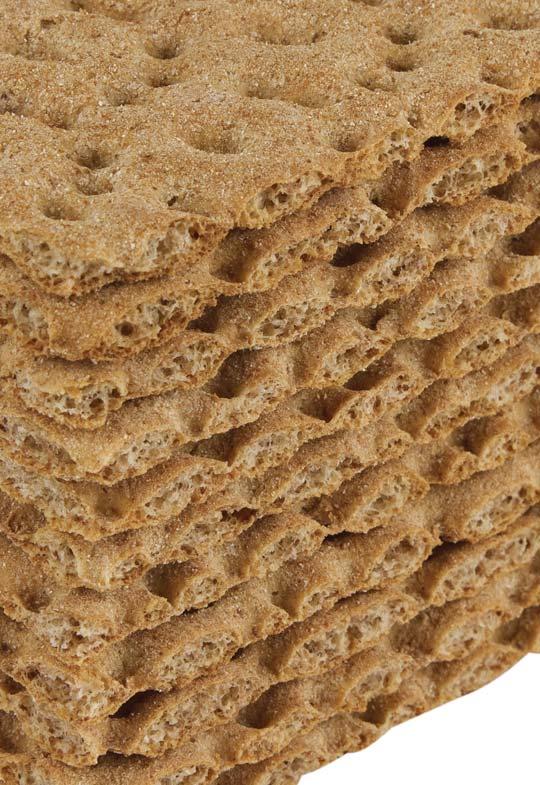
SHTYM•YTILA
•YTILAER
14 www.OK.org
MYTH
V S
SHTYM
WHAT’S UP WITH WASA CRISPBREAD?
BY RABBI BENZION CHANOWITZ
There is a custom not to eat matzah for thirty days before Pesach. However, this only applies to kosher for Passover, plain matzah. There are matzos that have other ingredients, like salt and spices, that do not fall under the category of lechem oni (poor man’s bread). ALTHOUGH WASA CRISPBREADS RESEMBLE MATZAH IN SOME WAYS, THEY ARE NOT KOSHER FOR PASSOVER!
The ~ Kosher consumer hotline receives many inquiries regarding Wasa Crispbreads. It seems that kosher consumers like buying Wasa Crispbread, yet this product is somewhat of a mystery. Is it a bread, a cracker, or a matzah? It is not as soft as bread, yet not as hard and flat as matzah. Each slice of the crispbreads weighs 11 grams (less than 1/3 of an oz.), and is about 1/3 of an inch thick. It is also made mainly out of rye, not wheat, and is imported from Sweden or Germany.
1. WHAT IS CRISPBREAD?
Crispbread has been eaten for about 1,500 years in Sweden and Finland. These crackers are traditionally made from whole meal rye flour, water and salt. The dough does not rise much and the therefore does not become as soft as bread. Crispbreads are baked flatter and more dry, and therefore, keep fresh for a long time. This is why crispbread is also called “knackebrod” or “hartbrod” (hard bread) in Sweden.
In Scandinavia, crispbread used to be considered a poor man’s bread. They used to be made in the form of a round flat bread with a whole in the center. The bread would then be stored (for the winter) on long poles hanging from the ceiling.
The first industrial bakery began producing crispbread in 1850 in Stockholm, Sweden. Wasa or the Wasabrod Company opened its first bakery in 1919. (Incidentally the name Wasabrod does not get its name from water bread. Rather it was named after King Gustavus Vasa.)
2. HOW DOES THE BREAD COME OUT SO LIGHT?
Generally, yeast or sourdough is used in bread production to make the dough rise and achieve the characteristic lightness. Years ago, Scandinavian bakers would mix snow or powdered ice into the dough. Then, when the dough was baked, the water would evaporate and leave spaces in the bread.
3. WHAT INGREDIENTS ARE USED IN WASA CRISPBREADS?

Though the main ingredients of this bread are rye flour, water and salt, various other ingredients are added to diversify the taste and texture. These include: sour dough, yeast, oat flakes, wheat flour, barley flour, light rye and rosemary.
In general, rye is considered a second class grain which was usually used by the masses, while bread made from white



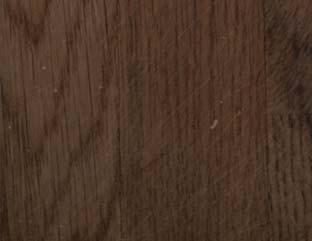
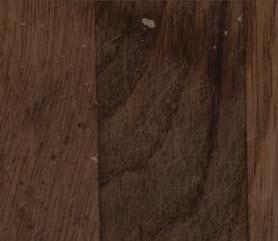
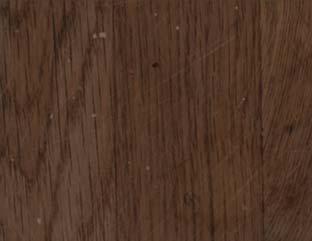
wheat flour was usually the bread of choice for the rich. Rye does not rise as much as wheat flour, and it remains moist longer; therefore, rye crispbread lasts for a long time.
Crispbread is known to contain a large amount of dietary fiber. This is because they use whole grain rye, which contains very little fat. Though they do contain some gluten, rye has less gluten than wheat.
4. IS WASA CRISPBREAD KOSHER?
Of course it is, BUT NOT FOR PESACH! Just look for the ~ Kosher symbol proudly displayed on the bottom left of the package!
Consumers often ask if the product is dairy, because the packaging of the German produced crispbreads says “May contain milk”! Halachically, one may not make DAIRY bread, even if its ingredients are kosher*. Our Sages decreed many years ago that bread cannot be dairy or meat, because bread is the main part of the meal and is usually pareve. If it would be dairy/meat, people may mistakenly eat the bread at the wrong meal.
*NOTE: There are some exceptions to this law.
Wasa Crispbread is made in both Sweden and Germany. Only the German made products have a milk warning on the label. We asked Rabbi Osher Gutnick, Europe Coordinator at ~ Headquarters, and he answered the following:
“It’s not dairy; that statement is an allergen warning required by law, because there are other (non-certified) production lines in the facility that handle dairy. There may be (halachically insignificant) cross-contaminations, such as airborne particles, but the product is pareve.”
5. WHAT ABOUT PAS YISROEL?
In Shulchan Oruch, Yoreh Deah, Siman 112 it says, “The Rabbis prohibited one to eat bread made by a non-Jewish baker (friend), as it can bring (to closeness and eventually to) intermarriage. The Rama adds that it is prohibited even when it will not bring to intermarriage.”
In Se’if 3, he adds, “There are some (places) that are lenient and allow buying bread from a baker that sells bread for a living, Pas Palter, (as it is his business, not a personal gesture), if there are no Jewish bakers available. Some even permit it
YTHS V S R TILAE www.KosherSpirit.com 15
when there are Jewish bakers available. (Yet clearly it is prohibited to receive bread baked by a non-Jewish friend.)”
Even those who take the lenient approach to Pas Palter, are told that this leniency should not be used during the Aseres Yemei Teshuva from Rosh Hashanah through Yom Kippur.
In our case, where the Wasa crispbread is baked in a commercial bakery, would we be permitted to eat it if we are careful not to eat Pas Palter?
In Se’if 9, he says “If a Jewish person lights the fire and the non-Jew bakes …. Even if (the Jew) only added one small piece of wood towards the fire, it is permissible to eat. This is because it was meant as a subtle reminder (not to become that close)…”


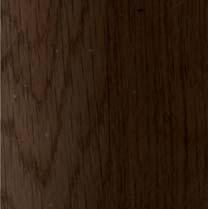
At this point, I would like to quote Rabbi Gutnick:
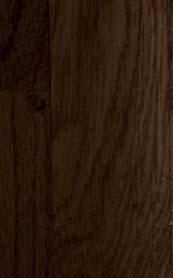
Wasa crispbread is produced in two plants, in Germany and Sweden. Both have similar systems in place to ensure the Pas Yisroel status of the crispbreads. The crispbreads are baked in electric-powered tunnel ovens, which have been switched on and raised to the correct temperature by our mashgichim, enabling Pas Yisroel production. These are very large ovens which operate continuously, using a conveyor system.
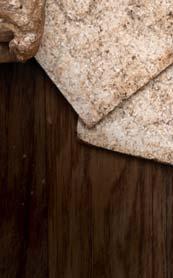

During the company’s summer and winter breaks, production is paused and the ovens are lowered slightly, but always maintain a minimum temperature of 350 C, because it takes a very long time for these ovens to cool down and reheat. In fact, the ovens are so large that it would take about 14 days for them to cool down completely. The company does not want to waste this valuable production time.
~ mashgichim visit the plants every other month to check production and maintenance records and confirm that the ovens have been operating continuously. Additionally, they lower and raise the temperature of the ovens by a few degrees Celsius. This way they contribute to the baking process in the form of hashlachas keisam (adding fuel to the fire), as explained above. They also visit the plants at the conclusion of every summer and winter break, to raise the ovens prior to resuming production.
6. WHAT BRACHA DO WE MAKE ON THIS CRISPBREAD?
In Shulchan Oruch, Orach Chaim, Siman 168, Se’if 7, it says that on Pas Haba B’Kisnin (a breadlike food that is usually eaten as a snack), we say borei minei mezonos. Then, it discusses three opinions on what Pas Haba B’kisnin is:
a. Bread (flour and water that is shaped like a pocket [like a pita or knish]) that is filled with fruit before it is baked.
b. Bread made with flour that was kneaded with honey, milk, oil, eggs or fruit juices.
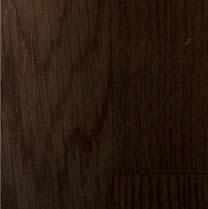
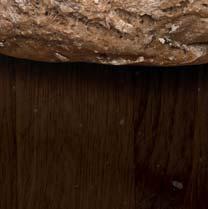
c. Bread that was made with water and without any filling, yet it is usually used for a snack since it is baked as a thin cracker.
Accordingly, it would seem that Wasa crispbread should fall into category 3 and require the brocha mezonos. Yet, even though the halacha is that we follow all three opinions, the Baal HaTanya seems to hold that it is better that one eat this (unflavored) cracker during the meal. (Note: please see the previous article in the Tishrei 5771 edition of Kosher Spirit.)
But, there is another problem here. In the third interpretation of Pas Haba B’kisnin, we are talking about bread that was baked originally in a cracker form. If the cracker was baked originally in a bread form and then made into a cracker, it would require hamotzi. This is the reason that we make hamotzi on melba toast (of flour and water) and flavored bread croutons (as per Rabbi Belsky, a”h), since they were originally baked as bread. In Shulchan Oruch, we are told that the only way that a hamotzi bread turns into a mezonos bread is if it loses “Toireesa D’Nahama” (the form of bread).
Even on the Wasa Crispbread website, it’s obvious that the crispbread is baked as a whole bread first (note the bolded words stating that they are slices):



Light in many ways! Lightly baked, extra-fine slices of our mildest whole grain rye flavor are in our Wasa Light Rye Crispbread. The delicate taste complements even the mildest topping. Lightly crispy…and only 30 calories per slice.
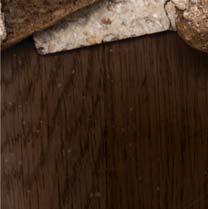
Wasa crispbread is made originally as a large matzah, and then sliced into small cracker sized pieces. There is a question whether all matzah is mezonos or hamotzi. We all know that matzah during Pesach is hamotzi, yet when we eat matzah after Pesach, there are various opinions. Many Sefardim would make a brocha mezonos year round, while most Ashkenazim opine that you would make hamotzi. If so, it would seem that Ashkenazim may have to make hamotzi on Wasa crispbread.
Consequently, it would seem that we would make hamotzi on the crispbread. We would also need to bentsch, if we eat the proper minimum amount.
Hoping that this helps clarify the Wasa Crispbread in a crisp clear manner! ~
16 www.OK.org
What’s the Big Deal About



































 By Rabbi Sholom Ber Hendel
By Rabbi Sholom Ber Hendel




The ~ often receives questions from consumers about the kosher status of Slurpees. For example, “During the summer (and even the winter) whenever we pass by a 7-Eleven store, my kids always want to buy Slurpees, but I always say no because I am unsure if they are kosher. I looked at the boxes with the flavors and noticed that many of them are produced by Dr Pepper Snapple Group and bear the ~ symbol, so I am reaching out to you to find out the kosher status of these Slurpees. Thanks for your help!”
Dear Consumer,
Thank you for reaching out. You are correct; many of the Slurpee flavors produced by Dr Pepper Snapple Group are ~ certified. You can find several products under the following brands that bear the ~ symbol: Canada Dry, Crush, Dr Pepper, Hawaiian Punch, IBC, Squirt, Sunkist, and Vernor’s. Keep in mind that every flavor dispenser is connected to a box with the syrup, which is usually located underneath or behind the machine. It’s important to always check the actual label on the box to confirm that the flavor bears the ~ symbol.











Now, you may ask, what about the status of the Slurpee machine itself?
While the majority of the Slurpees in the USA are certified kosher pareve, there are a few dairy and non-kosher flavors out there. However, these flavors don’t cause the machines to become non-kosher because they are cold and usually not left in the machine for 24 hours (which makes the machine kavush). We know this because the compartment in the machine is so small that the Slurpee flavor is replaced after filling a few cups. Additionally, the percentage of dairy and non-kosher in these products is typically low.
While stores often keep the same flavor choices, they occasionally change the flavors and the machines are not typically cleaned when the flavor is changed. Since the amount remaining in the machine is very small, one can be lenient and consume the kosher pareve flavor even if the previous flavor was dairy or non-kosher.
Also, keep in mind that Slurpee is a registered trademark sold only at 7-Eleven stores. Other gas stations or convenience stores sell similar products but more caution is needed when purchasing from them. While 7-Eleven stores mostly use the main brands which are more likely to be kosher certified, other stores may use generic-brands that are not necessarily kosher certified. If the dispenser is shared among more than one flavor, and you cannot confirm that they are all kosher, it is recommended to run the machine until there is no residue of the previous flavor before filling your cup.




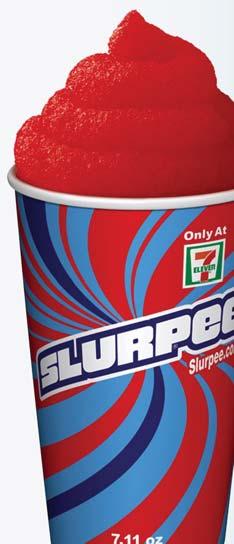

The ~ recommends using a kosher certified location as the best option to purchase the icy treat, but there is room to be lenient even in uncertified locations as long as the consumer makes sure that the particular flavor is certified.























Enjoy your kosher Slurpee!

w wwwww.Ko Ko Kosshe sh rS rSpSpiriit.t.c tc c t o om m 17 1 surs as ?
KOSHER CERTIFICATION

 From the Desk of Rabbi Don Yoel Levy
Rabbi Don Yoel Levy CEO/Kashrus Administrator
From the Desk of Rabbi Don Yoel Levy
Rabbi Don Yoel Levy CEO/Kashrus Administrator
Words of Wisdom
A Collection of Quotes About & From Rabbi Berel Levy OB”M on his 30th
Yahrzeit
He was never afraid of something new. Toward the end of his life, when we at the ~ were being mercilessly attacked, I asked him what he would do if something happened to the ~. He answered, “So? I will start something new.” This was when he was in his sixties!
His desire to go back to the source led him to the four corners of the world. He was a pioneer in kashrus with his methods and his policy of visiting even far fl ung areas. He was the fi rst to extensively visit the Far East for kashrus and had just returned from an extended visit to China before he passed away.
Dial-Clock Magazine dubbed Rabbi Levy,

In 1979, Rabbi Levy told the New York Times that he had already logged millions of miles. The reporter described him as having
In April 1973, he wrote,
Rabbi Yosef Wikler, publisher of Kashrus Magazine.
“Unquestionably, we could provide supervision for many more hotels on the North American scene,” he wrote. “But we are not ready to compromise our principles. ~ Laboratories has built a reputation of being scrupulous in its hashgacha: it does not give its certifi cation easily or take its responsibilities lightly.”
18 www.OK.org
~
“Personality clashes are counterproductive: they sap our energies and leave us too weak to do our best in bringing our mission to fruition.”
“The Sherlock Holmes of the food industry.”
“He made no secret of his feelings – his way was far superior.”
– Ira Axelrod
“I am not infallible. If, chas v’sholom, I make a mistake, I will be the fi rst to rectify it.”
“He had no patience for anything but the optimum standards on compliance and effi ciency,” recalled Ira Axelrod.
“the sinews of a young man and the gray beard of a patriarch…”
“He was much more than the others; he was much stronger,” said
“Always go back to the source,” and “Never be afraid to confront any obstacles,” were my father’s, ob”m, way of life.
When rumors began to circulate that the OK’s largest competitor, the OU, supervision was not adequate, he stood up for them in the November 1971 issue of the Jewish Homemaker: “Let me say earnestly for all to see and hear: the rabbi who administrates the kashruth supervision of the OU is one of the most sincere and revered rabbis in the fi eld of kashruth and has more mesiras nefesh for the dissemination and observance of genuine kashruth than any one person I know.”
Rabbi Levy wrote in April 1976, “I mention above how diffi cult it is to supervise one’s own kitchen for Pesach for a small group – how much more so for thousands of Jews.”
Rabbi Levy wrote in a June 1985 article, “I honestly do not know what people mean by this. I am not running for offi ce and removing a hechsher does not make me popular in the eyes of the public.”
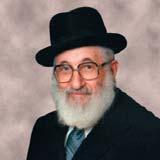
Rabbi Avraham Feigelstock, who leads a kosher agency in Vancouver, Canada.
Rabbi Levy wrote in April 1976, “I mention above how diffi cult it is to supervise one’s own kitchen for Pesach for a small group – how much more so for thousands of Jews.”
And though his criticism of other agencies was sometimes withering, he never named them explicitly. “We are only human,” he wrote in February 1978, “and pray to the Almighty that these accidents be at a minimum.”
“I have been told by companies that the OK is too diffi cult to deal with, ‘therefore we must change our supervising agency.’ Our readers surely understand what this means. If a company is not cooperating with the supervising agent and knows there is another kosher certifi er waiting in the wings to grab the certifi cation, you can imagine what can happen to kashruth!”
www.KosherSpirit.com 19
“I’m working for people, serving people and trying to make the world a better place to live.”
“Rabbi Levy like to say, the question we ask should not be whether a food is treif, but rather, ‘Is it kosher?’”
“Foods must be definitely kosher before you eat, not definitely treif!”
“He never felt that he was a posek,”
said
“He would tell me, ‘I will call Rabbi Feinstein.’”
Rabbi Berel Levy OB”M 5 Nissan, 30 Years
WHO’S BEHIND THE ~
~
MEET OUR STAFF: BEHIND
KS: Where did you grow up?
RYW: I was born and raised in Morristown, New Jersey.
KS: What did you do after yeshiva?
RYW: I received semicha (rabbinical ordination) from Rabbi Mordechai Eliyahu, ob”m, the former Chief Rabbi of Israel. While completing my rabbinical studies, I spent five years leading services, community and youth outreach in Australia and across the USA.
After completing my semicha studies, I married my wife Baily, and learned in the Crown Heights kollel. Following kollel, I served as the Principal of Judaic Studies at a school in
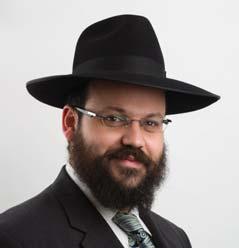
Long Island and had an educational position in Ottawa, Canada.


KS: What is your current position at the ~?
RYW: I am the Key Accounts Manager at the ~, where I interact with key ~ Kosher customers in very diverse markets across the world and oversee the team servicing these clients. In addition, I play a role in the growth department, broadening the kosher market.

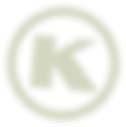
KS: What prepared you the most for your current position at the ~?
RYW: As a principal in a school, I practiced
Interview with Rabbi Yankel Wilschanski
Rabbi Yankel Wilschanski
20 www.OK.org
managing teams and interacting with teachers, parents and students. This experience helped me realize that I truly enjoy spending face to face time working with people and solving problems.
KS: What is best thing about working at the ~?
RYW: The support given by upper management, while giving leeway for independent decision making empowers the staff to grow and develop their talents and shine in their respective roles. With Rabbi Levy at the helm and his unique attention to detail, no area of kosher goes unnoticed and all bases are covered to achieve the highest level of kosher without comprise. I would be remiss not to mention the friendship and comradery I’ve built with Rabbi Eli Lando, who has been a mentor and guide in my growth at the ~.
KS: How would you describe the ~ today?
RYW: The ~ is the premier leader in kosher supervision. Our senior management has done a really good job of choosing people with diverse talents whom practice true collaboration and teamwork. The ~ is a place where kosher is the focus of everything we do.
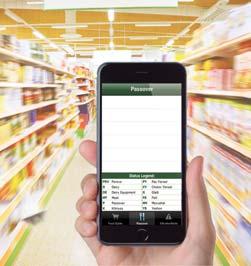
KS: Tell us something interesting about you that we don’t know.
RYW: I make sure to do homework with my children even when traveling. I travel quite often for the ~ and I have literally done homework with them from across the globe; it’s very important for them and me.
“
What Other People Say
 Rabbi Yankel Wilschanski
Rabbi Yankel Wilschanski
“ Yankel's youthful enthusiasm and charm, coupled with his intensive effort and drive, make him a naturally good fit in the ~ team."
Administrator
“ Time has proven that a lot of the ~’s recent success is due to Rabbi Yankel Wilschanski’s total dedication and commitment to his job and the many clients we service. His inclusive approach makes our customers feel warm, welcomed, and trusted. A true asset to our team.”
Dovid Steigman Senior Rabbinic Coordinator
“ Yankel brings positive energy and enthusiasm to the office every day with his constant smile, confident manner and liveliness. It’s a pleasure working with him.”
Coordinator

“
Rabbi Don Yoel Levy Kashrus
Rabbi
Rabbi Sholom Ber Hendel Rabbinic
www.KosherSpirit.com 2 21 1 Download the Kosher Food Guide app and get the most updated list of the Kosher for Passover products that ~ Kosher certifies It’s like having a rabbi at your side whenever you go shopping...
it
KOSHER CERTIFICATION ~ Kosher Spirit, 391 Troy Avenue • Brooklyn, NY 11213 718-756-7500 • info@ok.org • www.ok.org follow us on Twitter @KosherAlerts For the latest in Kosher news follow us on Facebook facebook.com/okkosher Best wishes for a Kosher and Freilichen Pesach from ~ Kosher Certification Search OK Kosher in the App Store or Google Play store.
Is
Kosher for Pesach?
In addition to the four cups of wine that each participant drinks during the Pesach Seder, a fifth cup is placed on the Seder table. This cup, which is not drunk, is known as kos shel Eliyahu, Eliyahu’s Cup.

Regarding this cup, the Baal HaTanya states in his Shulchan Aruch: “It is customary in these countries to pour an additional cup — one more than for those seated. This cup is called kos shel Eliyahu.”1
What is the reason for this additional cup, and why is it so named? There is a difference of opinion in the Gemara2 regarding the necessity of pouring a fifth cup of wine. Since this matter was not clearly adjudicated, there are those who say3 that a fifth cup is placed on the table. This cup, they say, is called kos shel Eliyahu, because, just as Eliyahu will clarify all doubtful Halachic matters, he will clarify the ruling about this cup as well.
However, from Chok Ya’akov 4 and the Shulchan Aruch HaRav5, it is clear that the fifth cup and kos shel Eliyahu are two distinct entities, each involving different rulings as to whether it need be poured at all, whether the wine may be drunk, and whether it is poured for each individual in attendance, or only once for all those assembled.
The question thus remains: What is the reason for the custom — not mentioned at all in Gemara or the Rishonim — of placing an extra cup of wine on the table, a cup which is not drunk, and calling it kos shel Eliyahu?
The very fact that kos shel Eliyahu is merely placed on the table and not consumed indicates that it is bound up with a level of Divine service loftier than man’s drinking of wine. This is so, for kos shel Eliyahu is bound up with the final Redemption, something that transcends man’s service.
The fact that kos shel Eliyahu and the ultimate Redemption are intimately linked is to be deduced from the fact that the Baal HaTanya relates the custom of kos shel Eliyahu after first stating:
Kos Shel Eliyahu
– A Cup of Redemption From The Chassidic Dimension, adapted by Rabbi Sholom B. Wineberg


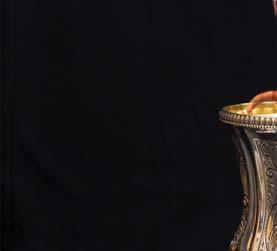
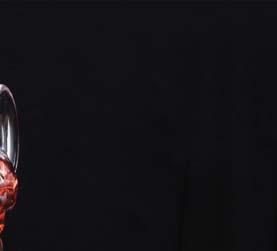
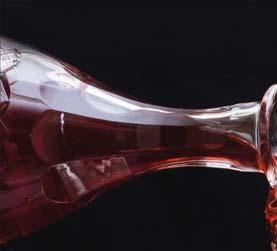
“In some places, it is the custom on the [first] night of Pesach to leave the bedroom doors unlocked, for it is a propitious night for the Jewish people unto all generations that they then be redeemed from this exile.
“For if Eliyahu (the individual who brings the tidings of Redemption) comes, he will find an open door, and we will go out and greet him speedily. We firmly believe this, and in believing so, there is great reward.”
The Baal HaTanya then goes on to state: “And it is customary in these countries to pour… kos shel Eliyahu.” Clearly then, the kos shel Eliyahu is bound up to the Jews’ faith in the coming Redemption.
This belief is to be found within all Jews, for all are “believers and children of believers.” And this is so, notwithstanding the individual’s revealed level of service. For every Jew intrinsically believes in and awaits the coming of Moshiach — this belief and anticipation being a Divine command both in the written and oral Torah.6 Moreover, these feelings grow ever stronger as we move closer to the Redemption. This is why it is specifically in these later generations, when the time for the final Redemption draws closer and the passionate longing for its coming grows stronger, that the custom of pouring a kos shel Eliyahu has become widespread.
Also, the expression “to pour an additional cup — one more than for those seated,” alludes to the fact that Eliyahu HaNavi becomes one of those who are seated at the Seder table. For the belief of the Jewish people on this night — the night when Gd revealed Himself in His full glory, and which finds physical expression in the cup and the wine — is in itself sufficient to unite Eliyahu with the partakers of the Seder, to the degree that the prophet himself becomes a participant.
Based on Likkutei Sichos, Vol. XXVII, pp. 52-55
The content in this page is produced by Chabad.org, and is copyrighted by the author and/or Chabad.org. If you enjoyed this article, we encourage you to distribute it further, provided that you do not revise any part of it, and you include this note, credit the author, and link to www.chabad.org. If you wish to republish this article in a periodical, book, or website, please email permissions@ chabad.org. Also reprinted with permission from Sichos In English.
CHASSIDIC INSIGHTS 22 www.OK.org
1. Orach Chayim, 481:1.
2. Pesachim 118a, according to the text of the Gaonim, Rif and Rambam. See Likkutei Sichos, Vol. XXVII, p. 48 and footnotes and places cited there.
3. Quoted in Taamei HaMinhagim I, Section 551. 4. 480:5. 5. Cited above.
6. See Rambam, Hilchos Melachim, begi nning of ch. 11, and ch. 12:2.
Why iS the lAst Day Of Pesach Called Acharon Shel PesacH? It iS sAid That makinG a
We don’t find any other Yom Tov which has a special name denoting the last day – there’s no Acharon shel Sukkos or Acharon shel Shavuos.
The prophet Yirmiyahu says, “Therefore, behold, days are coming, says the L-rd, when it will no longer be said, As the L-rd lives who brought Israel up from the land of Egypt.”
(Yirmiyahu 16:14)
We call the final day of Pesach “acharon” (the last) because we demonstrate our faith that this Pesach will be the last Pesach in exile. When Moshiach comes, we won’t celebrate Pesach as we do now, which is why we refer specifically to the last day as the Final Day of Pesach.
SOUl NuTRition
By Rabbi Chaim Fogelman
• It’s a known fact, as Tosfos explains, that the Jews went in to the sea and came out on the same side, like a big half circle, which means that the outer edge of people walked more than the inner side. This is compared to those that are destined to work long and hard to make a living, while others have seem to attain parnossa much faster and easier.
What's the ConNection?
• At the splitting of the sea, the Satan said to Hashem, “Why save them (the Jews)? They served idols and they (the Egyptians) served idols. It’s not worth it to save them.” But Hashem didn’t listen and saved the Jews anyway, and when the Satan says, “Don’t give that Jew a livelihood; he is not worthy,” Hashem doesn’t listen and give him his sustenance anyway.
• Finally, just like the splitting of the sea happened suddenly, when the Jews felt like there was no hope, so too, Hashem suddenly helps with one’s livelihood just when it seems that things can’t get more desperate.
SOUL NUTRITION www.KosherSpirit.com 23
liVing iS As DiffiCult as the SplittiNg of tHe Sea.
BRAND NEW FROM THE ~ ! THE MOST

TALKED ABOUT GUIDES FOR THE JEWISH WOMAN...
A COMPREHENSIVE GUIDE FOR HOUSEHOLD HELP IN THE KOSHER HOME AND VEGETABLE CHECKING GUIDE.

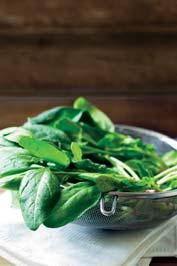

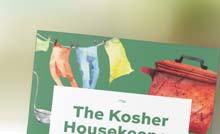
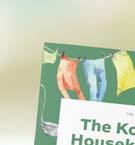

VEGETABLE CHECKING GUIDE
PUBLISHED BY ~ KOSHER CERTIFICATION



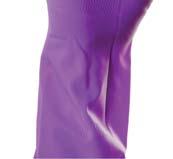









ALL YOU NEED TO KNOW ABOUT WORKING WITH HOUSEHOLD HELP. FREE!
GET YOUR COPY TODAY BY EMAILING NEWS@OK.ORG
BILINGUAL






 Wendy L.
Wendy L.



































































 From the Desk of Rabbi Don Yoel Levy
Rabbi Don Yoel Levy CEO/Kashrus Administrator
From the Desk of Rabbi Don Yoel Levy
Rabbi Don Yoel Levy CEO/Kashrus Administrator







 Rabbi Yankel Wilschanski
Rabbi Yankel Wilschanski

















